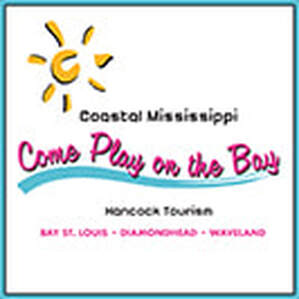A local rescue group specializing in saving "throw-away" pit bulls in South Mississippi has saved more than forty dogs in the past year. Meet Just Cause director Jeanne Montana and find out why she's smitten with a breed that gets a bad rap. - story by LB Kovac
These are fitting mantras for a group tasked with not only saving abandoned and unwanted dogs but also changing public perception to help them find loving forever homes. Jeanne Montana is the founder and owner of Just Cause, a Saucier-based rescue group that specializes in pit bull breeds. Originally a bartender by trade, she started the organization after meeting two special pups. “After Hurricane Katrina, my daughter, who had two pit bulls, had to live with me,” says Montana. “(The dogs) really changed my perception. They were great.” She became more intrigued, she said, “when the Michael Vick story came out.” Vick, former quarterback for the Atlanta Falcons, was arrested in 2007 for using pit bulls in an illegal dog fighting ring run out of his personal kennel, which he called Bad Newz Kennel. This intrigue developed into a passion. Montana’s organization now partners with animal shelters along the Mississippi Gulf Coast, including our own Hancock County animal shelter, to take “overflow animals,” dogs that the shelter doesn’t have resources to help and that would otherwise face euthanasia. Pit bulls are one of the least-adoptable dog types in any given shelter. According to a story published in The Washington Post, they are the most common dogs in animal shelters, and the dogs spend, on average, three times as long in the shelter as lookalike breeds. Of the 1.2 million dogs euthanized in American shelters each year, a vast majority (800,000 - 1 million) are pit bulls. According to Esquire Magazine, that's about two to three thousand pit bulls killed in this country every day. In addition to saving shelter dogs, Montana also takes in stray dogs or dogs surrendered by their owners. “Lots of people bring in their pits because their landlords won’t let them have them. We also get dogs abandoned for other reasons,” says Montana. With the help of Just Cause’s dedicated network of workers and volunteers – De Conover, David Snyder, Petra Lafferma, and Denise Hines, among others – Montana gets the dogs veterinarian attention and places them in a foster’s care. Though Just Cause accepts all dog and cat breeds, Montana continues to specialize in pit bulls. These breeds need special attention, says Montana: “You have to be kind of firm with them.” They also have to fight a prevailing image that they are highly aggressive dogs. But pit bull breeds aren’t necessarily more aggressive than other dog breeds. “Pit bull” is a term that covers several breeds. American Staffordshire Terriers, American Pit Bull Terriers, and American Bullys are just some of the dogs often referred to as pit bulls. These dogs all have physical characteristics in common – shorter noses, wider jaws and jowls, and compact and muscular bodies – as well as overlapping ancestries, but they’re distinct breeds. Still, all pit bull breeds get a bad rap. Forbes put the lot at the top of their 2016 “Most Dangerous Dogs” list. Cities across the country have enacted BSL, or breed-specific legislation, requiring owners to have some or all pit bull breeds leashed and muzzled all times in public. Pit bulls pick up some of their aggressive reputation from the different breed backgrounds. Many pit bull dogs were bred for bull- and bear-baiting shows in the early 1800s. The breeds continue to be popular for dog fighting rings, as evidenced by the Michael Vick story. Of the more than 8,000 dog-on-human bites collected and recorded by website Dog Breed Info between 2013 and 2016, 674, or about 8%, of the bites came from one breed of dog: the German Shepherd. The American Pit Bull Terrier, the first of the pit bull breeds to make the list, had less than one-third of the recorded bites of German Shepherds.
And a study published by The Atlantic of more than 4,000 dog owners found that diminutive chihuahuas were the “most aggressive” breed. In that same study, owners “consistently ranked (the American Pit Bull Terrier) as one of the least aggressive dogs.” Montana and her team have to fight this perception every time they put a pit bull up for adoption. “Lots of animals are scared when they come to the shelter,” says Montana. “Pit bulls might look mean, but they are just like other dogs. They’re just more misunderstood.” Luckily, more people are beginning to see past the pit bull’s brash exterior. In the year that the Just Cause has been operating, it has helped about 40 pit bulls and dogs find their forever homes. These pups are getting the helping hand, or paw, that they deserve. D.I.E.T.: Change Your Outlook For Optimum Health
Feeling fluffy? Forget traditional dieting this summer and try a general lifestyle change instead.
- by Christina Richardson, PhD
Five Tips for Healthy Summer Eating:
1. Eat as close to natural as possible, choosing salads and foods from the garden and farmer’s market with a high water content. Watermelon and leafy greens are wonderful. When you eat foods with a high fat content — protein or carbohydrates — it takes energy to digest and body temperature rises.
2. Eat less than you do in the winter — you need less fuel to keep your body temperature in balance. Graze throughout the day. Make your regular three meals a day six smaller ones. Think about what your body needs today. Savor what you eat and do not give up what you love. Eat a few French fries, not an entire serving. Deprivation just makes you want something more. 3. Move more by parking your car further away from your destination. Take a morning walk. Avoid exercising in the middle of the day. Do a class with friends in yoga or at the gym. Enjoy! 4. Enlist your friends to help you stay on track. Ask them to join you in eating close to natural, eating less and moving more. No matter what task we set out for ourselves, we accomplish more with a little help from our friends. Some years ago I read the transcript of a sermon given by Dr. Robert McNeish, pastor of the Northminster Presbyterian Church in Resistertown, Maryland. In 1972 He used the example of geese flying in formation to show how people can work together. My favorite line is, “The geese flying in formation make loud honking noises, called contact calls, to help them stay together.” Pastor McNeish’s lesson was that we need to make sure that our honking is encouraging, supportive and that it brings out our best. Here is a video based on McNeish’s sermon. 5. Remember that tomorrow is another day. Every day is a day to begin again. Stay away from the weight scales. Every day jot down how your body feels. Diets do not work. Lifestyle changes do. Chopsticks on an Old Upright
Award-winning author and syndicated columnist Rheta Grimsley Johnson reflects on the pleasures of being impractical.
Find out more about Rheta's books and read her latest syndicated columns at RhetasBooks.com. Rheta's new gallery/shop, Faraway Places, is located at 102 West Front Street, Iuka, Mississippi.
My Girl Scout leader, not so much. I figured I got enough Bible stories in Sunday School and didn’t have the patience for a felt Zacchaeus up a felt sycamore tree.
I’ll have to admit, however, that the bad judgment tag stuck. I’ve been told by my father and two husbands that I make impractical decisions, first cousin to bad. I choose to think of myself as romantic. I made another such decision just the other day. Impractical, not bad. At least I hope. I bought a piano. I have no place to put it and couldn’t play it if it did play. Which it does not. Did I mention this was a tad impractical? For years I’ve wanted an old upright piano. My grandmother had one, could make even the most puritanical, blood-soaked hymn sound like a honky-tonk hit. The figurines she kept on top of the piano danced when she played, and the fat on her upper arms shook to the beat. After my grandmother died, my aunt sold that iconic upright to a stranger for $50. Better that than let family benefit. Soon enough I rented a furnished house in Monroeville, Ala., Harper Lee’s hometown. We were caretakers, actually, my former husband and I, settling in amongst the dry-rotting treasures in a rambling mansion in the woods. The cost we paid for baby-sitting such splendor was $200 a month. The house had an old upright piano. We didn’t have the money to get it tuned properly, but every party centered around the instrument. We were young. There were many parties. Always there was someone who could coax a tune from the yellowed ivories. I played at the level of “Chopsticks” and “Heart and Soul,” and my grandmother’s favorite stride piano song, “Redwing.” But planted in me during that brief period was the desire to sit down at a keyboard and become a Scott Joplin, or, better yet, Jerry Lee, a man who could take “Somewhere Over the Rainbow” from audio doggerel to Grade-A groove. So when a friend took me to see an old house she’s buying in the Pass, I couldn’t help but notice the old piano sitting idle in the modified dogtrot. Next thing I knew, I was talking to its owner about what would happen to the treasure. “It can be yours,” he said. “For $1 and getting it out of here.” “You were over-charged,” my former husband said when I told him what I’d done. “They usually pay you to get it out of there.” I reminded him of the fun we’d had with the Monroeville upright, but evidently in his maturity he’s forgotten the delight he felt when I taught him the treble part of “Silver Bells.” I already had realized the impracticality of my purchase after calling Three Men and A Truck – more like 30 men with 15 trucks -- who all put the bottom line for moving a piano at about $400-plus. Turns out, it takes four men to move one safely, and this particular antique was extra heavy. I knew the piano needed work. Both the furniture and the innards were pretty crusty. So I decided to have the movers shove it into the garage, the only place I could think of big enough to accommodate a piano. “So you’ll need another $400 to move it out of the garage when you decide where you want it,” my current husband said. Husbands are always demanding you use the soft pedal. I decided to shoehorn my acquisition into the living room, which necessitated rearranging every piece of furniture in the small house. But it fit. A practical woman might be sorry about all of this by now. I’m not – practical or sorry. I still think once a piano expert is called in and works on the guts, and a furniture doctor spruces up the outside, and I learn to play something other than “Chopsticks” and “Heart and Soul” and the two recital pieces I remember, I’ll have the last laugh. Or I’ll sell the piano to another romantic soul for $1. Mad for Mid-Century
Tips about picking up great mid-century finds and where to hunt for them in Old Town Bay St. Louis.
- story and photos by Karen Fineran
Clean lines and a streamlined, sleek appearance are the characteristics that define mid-century modern furniture, putting the emphasis on function and utility. With its understated look, less becomes more.
Without intricate lines or cluttered adornments to distract, mid-century modern style furniture tends to be highly practical, serving many different purposes to meet the demands of the modern lifestyle. Form follows function; many furniture designs nest, bend, stack or fold in order to be used more conveniently. Bold, vibrant colors abound, as do graphic blacks and whites. Another distinctive feature of MCM furniture is their use of the alternative man-made materials that emerged during World War II. Post-War designers integrated stainless steel, glass, molded plywood, fiberglass, vinyl, and plastics such as Plexiglass, Lucite and Bakelite into the design of their creations. Many MCM designers also used natural woods, but the one that tends to predominate is teak wood, with its warmth and strength. Popular culture also has helped to bring mid-century modern design into the mainstream. The AMC series Mad Men, which ran from 2007 to 2016, is an obvious cultural influence. The show's reputation for period accuracy extended to the sets, which were specifically designed to reflect East Coast interiors in the 1960s. MCM collector Amy Irvin moved to Bay St. Louis two years ago from New Orleans, where she had started her first antique business, MCM Furnishings. Irving’s collection of retro furnishings, barware, and accessories can now be found at Identity Vintage, at 131 Main Street in Old Town Bay St. Louis.
Amy has been passionate about vintage fashion and design for more than twenty years, beginning her vintage collecting with costume jewelry, dresses, shoes, and fur coats. Five or six years ago, her collecting focus shifted to mid-century modern furniture. Amy was attracted to the era because of its style, its aesthetic, and its functionality.
Amy became particularly enamored with the sophisticated drinking culture of the 50s and 60s and its beautiful barware – like slender cocktail shakers and geometrically-etched martini and cocktail glasses. In an age when we have seen the price of some other antique furnishing styles soar, Amy appreciates being able to find more inexpensive pieces. She loves the hunt for the next treasure, a pastime that she can pursue whether she is at home on the Gulf Coast, in New Orleans, or road-tripping about the United States. It’s easy to find vintage MCM items that fit your budget, Amy explains. All you need is one statement piece to set the tone nicely, and you can build the rest of your room around it. It does not have to be a set, but for best effect, avoid too many patterns and stay within a color range. Sleek and slimmed down furniture in open spaces gives the MCM home a light and airy feel, especially compared to the boxier, darker and heavier furniture styles from other eras. Suzi Walters, the owner of Identity Vintage, the Main Street vintage store where Amy Irvin’s MCM pieces are found, is also a connoisseur of retro pieces. Many of the vintage hats and accessories in Suzi’s collection are mid-century modern, and she also creates décor items from mid-century fabrics. Suzi also has a passion for collecting and selling vintage vinyl LP albums (she has accumulated nearly 1,000 classic albums in her stock already), and she carries vintage turntables to play them on. Now, that’s retro mid-century! The distinctive MCM furniture style combines beauty, innovation, and function. Look for mid-century in other Bay St. Louis antique stores as well: Antique Maison (111 North Second Street), Antique Maison Ulman (317 Ulman Ave.), the French Potager (213 Main Street) and Magnolia Antiques (200 Main Street). Although mid-century isn't the focus of their collections, they often have wonderful MCM items for sale. Although finding genuine and timeless mid-century modern articles can sometimes be hit or miss, what better reason could one have to frequent Bay St. Louis’ diverse retail shops to enjoy the search. Happy hunting, mid-century enthusiasts! Fishing in Our Own Back Yard
If you're not already an avid fisherman, follow fishing novice and Shoofly columnist Karen Fineran as she learns the basics from the best.
Treasuring Turtles
A new rescue group in central Mississippi nurses wounded turtles back to health, as well as providing information for those wanting to foster suburban habitat for these fascinating creatures.
- story by Ellis Anderson
Christy says there are several things residents can do to make their yards turtle-friendly. Don’t use pesticides or herbicides, especially if you’ve seen turtles in your yard. Plant a garden – they provide great turtle habitat. Before mowing, check your yard for those who might be in harm's way. And keep watch if you have large dogs, which sometimes use turtles as chew toys.
Christy and her husband Luke rehabilitate turtles that have had unfortunate encounters with canines, although most of their patients come from “road carnage.” They work with veterinarians to nurse the turtles back to health, then release them back in the area where they were found. If their patient is permanently disabled, they care for them until a special needs home can be found. But dogs and cars aren’t the only foes of turtles. Intentional harm by humans causes some turtle deaths and maimings. A few misguided fishermen have been known to shoot turtles in the mistaken belief that they’re eating potential catches. Turtles can also be targets for both adults and kids who are practicing firearm skills. And there are the heartless drivers will purposely try to hit a turtle crossing a road. “Sadly, we do see ones that have been hurt by malice,” says Christy.
From Admirer to Rescuer
Christy came by her love of turtles as a child, appreciating their peaceful natures and the fact they carried their homes on their backs. She never lost the love. In 2006, when a neighbor found a three-legged turtle on a burn pile, he thought of the Milbournes – he’d seen turtle figurines in their house.
Thus began a decade of intensive education, networking with turtle experts around the country, and the adoption of Booboo. Booboo was a 17-year-old Redfoot Tortoise raised in a small tank by well-intentioned owners in Maryland. Due to a poor diet and his small environment, his shell was deformed enough to prevent use of his back legs. Surrendered to another rescue group, the Milbournes adopted Booboo in 2010. He became a beloved and spoiled member of their family. According to a veterinarian specialist, Booboo wasn’t in pain, but would have a shorter lifespan. The predication came true, when, despite the pampering from the Milbournes, the tortoise passed away in 2012. His death solidified their dreams of dedicating even more of their time to turtle rescue.
Both Milbournes still work full-time for the Mississippi Department of Transportation, but the non-profit they have formed works to raise awareness with people in addition to healing wounded turtles.
Their website explains why it’s an awful idea to paint turtle shells (their shells are living tissue that will absorb toxins) or remove them from their natural habitats (they’ll spend the rest of their lives trying to get home). The rescue success story page makes for fascinating – and heartwarming – reading.
Want to help a turtle cross a road? You’ll find complete instructions for that on the website as well:
For turtle emergencies, simply go to the website’s Contact Us page for instant advice. “If you come across a wounded turtle, don’t assume it can’t live,” Christy says. “They’re incredibly tough. We work closely with a coast organization called Wild At Heart, so someone can help.” The website also hosts an informative photo gallery, showing every type of turtle found in the state. According to Christy, the Mississippi coast is home to almost every one of them, 35 species. Lucky for us – and the Millers.
Live Music:
~ Christian Serpas and Ghost Town at the Mockingbird Café (110 S. Second Street), 6pm - 9pm. ~ Dave Mayley Band, Daiquiri Shak (112 Court Street), 5pm - 9pm. Buttercup Cafe
|
Pirate Day in the BayWe've got the Pirate Day schedule of events: Colorful, costumed rogues fly the Jolly Roger over Bay St. Louis on the 19th and 20th of May. Everyone's welcome to join the swashbuckling fun during this friendly festival. - story and photos by Ellis Anderson |
Snowbird Dogs (and Cats)
|
A few months ago we got a call from the Bay Hide Away RV Park. They wanted us to come for breakfast and to get a check for Friends of the Animal Shelter in Hancock County. "Sure," we said. My human, Christina Richardson, and I had a great breakfast and brought home a check to help with the spay and neuter program.
Bay Hide Away is a wonderful campground where many of the same people come back every year to see the sites on the coast and do things together. Joe and Michele Richard own the place and encourage their visitors to bring their pets. Well, one thing led to another and I decided to get a few stories about these furry visitors to our area in the words of the humans who travel with them. Enjoy! |
Puppy Dog Tales
|

My cat Silly, she can love you one minute & hiss at you the next. She loves to travel in our motor home. Silly sleeps on a rug on the dash and sometimes she even wants to drive. She loves Bay Hide Away Campground. She loves to watch the birds & has lots of sunshine for all her naps. Silly's quite vocal when she wants to eat, especially at 2am. But all in all, we wouldn't trade her. She's our little girl.
This is my mugshot from the paper shredding incident. But I was framed, the cat did it! After my rescue from Alabama and transport to Connecticut, I found my forever home. I now travel the country in a travel trailer (which is a whole lot easier to guard than a house) with my human. I get to sniff new places, score treats from new neighbors, and ride in a truck. But the place I have the most fun and spend the most time is Bay Hide Away. It's nice to have a place to come home to when you're 'On the go'. Marco Polo.
|
Shmoo from Wisconsin
Shmoo is our Bichon and the ruler of our household. How his name came about. Remember "Little Abner?" There was a small little group of bowling pin-sized white creatures. Their whole purpose in life was to make people happy. Our Shmoo lives up to this huge responsibility. He loves everyone! |
|
Riley & Bella from Illinois
We love coming south for the winter. It gets so cold at home, we don’t get to go out and play very much. That’s all we do now! We love taking our mom & dad for walks, and would be amazing at chasing squirrels and rabbits, if they would just trust us and let us run free! It’s also lots of fun meeting up with our Snowbird “dog” friends. There’s always new dogs, like Stretch - that is her photo-bombing our picture. She is from Kansas. We sitting by the campfire too. |
|
Rocky is 14 years old, and was rescued from Louisiana. He is the old man of the bunch and is retired from his days as Top Dog at Bay Hide Away RV Park! He loves to eat, sleep, go for short walks, play outside and eat lots of treats. He has traveled all over the U.S., visiting some of the Snowbird dogs. He prefers now to stay close to home and let them come to visit him!
|
|
Boomer is seven-years-old and a very sweet, friendly, fun dog. He loves to do everything and wants to be included in everything. He was rescued from a Flea Market in Louisiana. His first name was “Poppy” and then “Peanut." Through no fault of his own, the first two forever families did not work out. We changed his name to “Boomerang” (since he kept coming back) and he has been with us ever since!
|
|
Roux is an 11-year-old Bassett Hound. We rescued her when she was pregnant with eight puppies! She is fun-loving, never met a stranger, enjoys being around people, greeting other dogs and very playful. All of her puppies found forever homes, although her first born still lives with her! She loves to howl out a tune whenever she sees the camper’s walking or riding their bikes around the RV Park!
|
|
Youglee is a nine-year-old Bassett mix & Roux’s first born! He’s a sweetheart, loves people, animals, everything! Truly a momma’s boy, he gets teased a little for still living with his mom. He especially enjoys sitting on the backyard table or chair and watching the RVs go in and out. He loves going for walks and playing fetch with his toys. Youglee gets very excited when he meets the new campers and we joke that he cannot hold his “licker!"
|
|
Tiger Lilly - Michigan
At home our 15-yearo-old cat, Tiger Lilly, sleeps all day and goes out all night. So when we brought her here last year, she wanted to do the same thing. I carried her around the RV Park during the day so she could see where she was. The first time she asked to go out at night she came back in about 20 minutes. |
This year, when we came back to Bay Hide Away RV Park, we worked with her outside during the day again, letting her explore near the motorhome. Now she is happily sleeping all day inside and going outside at night.
Gentle readers, Daisy told me I need to end with her special sign off so, keep your tail high and your feet dry.
Love, Robbie
Beignets Always Hot!
- story and photos by Lisa Monti
|
Ana’s Cafe
2401 McLaurin St. Waveland 228-344-3223
Ana’s Cafe opened about a year ago in Waveland and has been drawing faithful customers for breakfast and lunch ever since. Owner Ana Rogers, a native of Portugal and the former owner of Grammy’s Donuts, seemed to know most of her customers on a recent Saturday morning, visiting from table to table to say hello and check on things.
As we waited for our orders, Rogers brought over a sampling of donut holes and a full-sized glazed donut. What’s a person to do? It would be rude not to. |
Coast Cuisine
|
When our breakfast orders arrived, both were tasty and plentiful, just what the first meal of the day should be. Ana’s Special holds top billing on the menu with classic fare: 2 eggs any style, grits or hash browns, toast or biscuit. Add bacon, sausage or ham or pancakes if you need more fuel. The daily special was a hearty omelet built around spinach and mushrooms, with hash browns and a large biscuit for good measure.
If you prefer a sweet start to the day rather than a savory breakfast, relax and enjoy. The display case in Ana’s Cafe is filled with enormous cinnamon rolls, flaky Danishes, crispy shoe soles, rich chocolate croissants, strudels, turnovers, apple fritters and muffins. And beignets. Yes, beignets. As the sign says, “Beignets Always Hot!”
Lunch at Ana’s is standard hearty fare, too. The menu includes roast beef, burgers, hamburger steak, pork chops, salads, chicken tenders and wings and shrimp grilled or fried.
There’s also a daily lunch special Monday through Friday.
Ana’s Cafe is open daily from 6 a.m. to 2 p.m. Monday through Saturday and 6 a.m. to noon on Sunday.
The Legendary (and Non-existent) Captain Longbeard
- story and photos by Ellis Anderson
|
If you live in Bay St. Louis, a pirate’s costume has turned out to be a wardrobe essential. You’ll want to pull yours out for the upcoming Pirate Day in the Bay, on May 19th and 20th - a two-day extravaganza of buccaneer bliss (for complete details, click here).
During the weekend, Old Town takes on the looks of a Pirates of the Caribbean set, while locals and visitors from across the Gulf Coast swagger through this fun family-festival. The event is sponsored by the Mystik Krewe of the Seahorse (KOTMS). The group originally formed in 2014 to help celebrate the 200th anniversary of a maritime battle that took place right off the shore of Bay St. Louis. |
Shared History
|
Captain Longbeard is now taking on legendary status. John Rosetti, 2017 president of the KOTMS, says he found it hilarious last year when one television station talked about Longbeard as if he were a real historical figure.
“He was just something I drew up on a napkin,” says Rosetti, laughing as he recalls how the character was created.
The actual historical event at the center of all this merriment happened in 1814 as a precursor to the more famous “Battle of New Orleans.” The Sea Horse was an American schooner that single-handedly took on the British fleet in a “David versus Goliath” encounter, right in front of the Bay St. Louis shoreline.
While the little ship was hopelessly out-manned, it managed to delay British forces, giving Andrew Jackson (who was commanding American forces in New Orleans) more desperately needed time to organize that city’s defense and keep control of the Mississippi River out of British hands.
Since the event occurred two centuries ago, accounts of the battle vary, but as local historian Charles Gray often says, “history is lies agreed upon.” The most riveting part of Gray’s version occurred when an older woman on crutches shouted to shore-side onlookers of the battle “Will no one fire a shot in the defense of our country?”
She then grabbed a lit cigar being smoked by Bay St. Louis Mayor Toulme and lighted the fuse to a cannon, which fired into the midst of the British attackers. Mayhem ensued.
And historians do agree that a few weeks after the Bay St. Louis battle, Lafitte and his band of ruffians fought alongside Andrew Jackson in New Orleans to repel the British invaders – a battle that probably would have been lost without the pirates’ help.
But don’t let the facts stop the fun. Captain Longbeard – this year played by MKOTS king Al Copeland – will be storming the town on the weekend of May 19th and 20th.
If you’d like to read more, details of the actual battle can be found here on the Krewe of Seahorse’s website.
Also, Charles Gray suggests reading Paul La Violette’s 2003 book, Sink or Be Sunk! The Naval Battle in the Mississippi Sound That Preceded the Battle of New Orleans. It’s available at Bay Books on Main Street.
Heaven on Carré Court
- story and photos by Ellis Anderson
Janet Fiveash
- story by Ana Balka
The Zen of Garage Sales
- story by Susan McManus and Christina Richardson
|
Garage sales raise more than $2 billion annually, so it is a good guess that millions of people in the U.S. have attended or hosted a garage sale. Attending is a sport for some, an outing, and an opportunity to find something special for a good price — negotiated, of course.
For the seller, the motivation is to make money for oneself or a charitable organization by offering used, unwanted, or redundant items to people who attend the sale at prices that make the sale a worthwhile effort. There can be some divergence between seller and purchaser on the value of items for sale, and that is part of the fun and the frustration. |
This On the Shoofly
|
There are some massive sales that extend over longer distances than the one in the Kiln. One that is really fun is the Route 50 yard sale. This year it was held May 19–21. It started in Indiana in 2000 to promote tourism along US 50 and to unite communities for fundraising.
Depending on where you are, these sales are also known as rummage sales, yard sales, attic sales, tag sales, lawn sales, junk sales and even beach sales.
The history of these sales we think goes back to the 16th century, when miscellaneous cargo stored in the hold of ships went unclaimed or was damaged. This cargo would be hauled off the ship and sold on the docks. The same practice was used for damaged or unwanted goods from storehouses.
By the 1890s, rummage sales were commonly held at a communal location such as a park or church for a charitable cause or to raise money for the church. After the end of World War II, people had more money; there were new consumer goods so they could buy more stuff. The 1950s and ’60s were times of acquisition and the ’70s were times of getting rid of all that stuff.
Four Steps to a Successful Garage Sale
A successful effort includes the right attitude going in and paying attention to four areas: presale, preparation, implementation, and wrapping up.
But first, attitude: Know why you are having the sale and what your expectations are. Plan on buyers looking for a bargain and asking you to reduce the prices for items you think are worth a certain amount. You are selling “treasures,” not stuff.
Treat your customers well, reminding them of your mission and negotiating gracefully. Some people are looking for bargains, while others want things to resell. Your goal is to give the customer a bargain, sell as much as possible, and to enjoy the experience.
Presale
Before the sale select the dates and location for the sale. Usually the best days are Friday and Saturday around midmonth. Check to see what other events are planned in your area so you are not in competition. Avoid holiday weekends.
Select the time for the sale, such as 8–2 or 7–3. People will come before and after but it’s best to have a designated time. Solicit volunteers. Having enough people to help is crucial, as this is a very labor-intensive function. Since there are many facets to a successful sale, volunteers can be involved in some or all of them, as they are able.
Location is very important. Pick a main thoroughfare if possible, with ample parking and easy access. Include address and sale times on all publicity.
Publicity includes such avenues as Facebook, websites, craigslist, newspapers, and signs.
Signage is very important and signs should be placed at intersections within a several-mile radius of location. Designate volunteers to put out the signs the day before the sale and collect them the day after. Make them generic enough to be reused, i.e. Yard Sale, Friday and Saturday, 8 to 2 PM, and address. Don’t include too much information, and use big lettering that is easy to read.
Next, get the word out — not just about the sale, but also to solicit donations. Remind donors to give you items that are clean, not broken, and are ready to display. Have a specified location and time for these donors to drop off their items. Ask donors to pre-price if possible and offer to collect larger items if you have that capability.
Tables are a must, and there needs to be a lot of them. Ask volunteers and donors to bring tables to sale location prior to sale.
Preparation
Setup requires many volunteers and is hard work. Tables must be arranged in columns with easy traffic pattern for customers to browse. Try not to use the ground to display items, but raise them up for easier viewing. Cover tables with tablecloths or sheets if they are not pristine; it is less distracting and makes items look nicer.
Unpack items from donors and be sure they are priced. They should be placed in designated areas depending on category. Do not put out soiled or stained items or junk. Be selective. Besides tables there should be some equipment to hang clothing, hangers, and poles, shoe racks, etcetera. Display of items is also very important.
Neatness is key. Constant vigilance of items by volunteers keeps thing from getting messy and disorganized during sale. Open spaces should be filled constantly. Collect boxes, have bags, and bubble wrap in reserve for sales at checkout.
Implementation
Sale items should be sorted and displayed by category. This includes glassware, china, kitchen, electronics, small appliances, luggage, bric-a-brac, media, art, frames, music, children’s toys, games and puzzles, sports and exercise, linens, pets, lighting, jewelry, decorations, holidays, bathroom, hobbies and crafts, clothing, miscellaneous.
Clothing should be subdivided into adults, men and women, children, costumes, accessories, shoes, and bags. Books should be separated into fiction, nonfiction, cookbooks, how-to books, and so on if possible. Furniture should be placed in front of sale area as that always attracts buyers. Volunteers need to replace items that customers move to appropriate areas.
Designate one person to be in charge of the money and to be in a location where customers can pay and have items bagged or packed. Volunteers can collect money but should always bring it to the money person after the sale. Money person should periodically remove large bills and place them in a secure location and never leave the moneybox unattended.
Pricing should be reasonable and items should be priced to sell. Evaluate donations, and price them fairly. Deals can be made with individual customers, but beware of the professional bargainer or dealer, as they can be very forceful. If items are priced fairly and reasonably there is no need for bargaining.
Offer to stack potential sale items by the money person so customers can continue browsing. Give them a small box to carry and fill with things before checkout. Volunteers need to be visible and available to answer questions and possibly show customers how something works or point out special items of interest. Don’t be too pushy, though, as people like to be left alone for most part.
Unfortunately, volunteers also have to be vigilant and watch for theft. There should also be a contingency plan for overnight and inclement weather, such as tarps and plastic sheets. Even though times are listed on signs there are always people who want to look after sale hours, just ask them politely to come back next day, or apologize that it is over.
Post Sale
After the sale is over, volunteers should pack up all remaining items in boxes and decisions should be made ahead of time about what to do with leftover stuff. It can be stored for next sale, donated to a thrift store, or discarded. This is another labor-intensive task, and may require different volunteers. Sale area should be left clean and garbage placed at curb for pickup. Tables should be collected by owners and all signs picked up and stored.
Treat your volunteers well. Donuts, pizza, and water go a long way to make the work more pleasant and you will get more volunteers next time.
A few days after the sale have a follow-up meeting to discuss what worked, what needs improvement and when the next sale is to be. Let all volunteers know how much they contributed and what the funds raised will be used for. Thank everyone multiple times — they worked hard.
Art Adventures in the Bay
- story by Lisa Monti
|
Visitors come to Bay St. Louis for a lot of reasons — the beaches, the casual lifestyle and a robust arts community among them. Now we can add another drawing card: art lessons taught by local artists. It’s part of a tourism trend seen nationally and now it’s starting to build here.
Two aspiring potters from Austin sent this testimonial to potter Regan Carney: “The town of Bay St Louis, along with the incredibly gratifying pottery workshop, has been one of the most delightful ‘adventure/learning’ vacations either of us has ever taken. The joy of working with Regan has us looking forward to returning each year for more fun filled ventures in clay.” Here’s a look at some of the artists and what they offer to visitors (and locals): |
Arts Alive
|
The Bay St. Louis Creative Arts Center
Steve Barney, the CAC’s director, has ambitious plans to make it a destination for snowbird artists. “There is a large demographic of semi-retired professionals in colder climates who are avid artists and are looking for opportunities to combine studio time with a mid-winter coastal retreat,” he said.
Barney is teaming up with Kevin Jordan, owner of Gulf View properties, to offer all-inclusive two- and four-week artisan retreat packages. Guests will be housed in Jordan’s guesthouses, studios and vacation homes within a block or two from the CAC.
 The pool/patio of "Abode," one of Kevin Jordan's properties.
The pool/patio of "Abode," one of Kevin Jordan's properties.
In addition to pottery and metalworking classes, artists can explore other mediums such as stained glass and silkscreening.
Local transportation options include a shared golf cart and fleet of beach cruiser bikes. Weekend excursions into New Orleans and other coastal destinations are planned. The first artisan retreat package is scheduled for January 13–February 17, 2018.
“Interest in our artisan retreat programs has been strong and we expect this program to grow slowly over time as word gets out,” Barney said.
For those not requiring accommodations or are interested in special arrangements, the CAC offers customized packages to visiting artists.
To book a spot in the 2018 retreat or for other information about CAC programs, email Steve Barney [email protected] or call/text 228-342-7668.
Regan Carney
Her work is widely featured, including locally in Gallery 220 and the Lawson Studio. Carney teaches beginner through master level classes at the coop.
“I am happy to teach any level in general or specific techniques. I teach both throwing on the wheel or handbuilding functional ware or sculptural forms. Usually throwing takes the most amount of time,” she said.
To make the experience the best it can be, Carney requires at least three weeks’ lead time to set up a private workshop for one up to six students.
“I need to know the level of expertise, if there is any, and if there is to be a focus.
I also need to know how long they are going to be in the area and how much of that time do they want to spend in the studio,” said Carney. Her workshops have been two days to six weeks. “Communication is key with this kind of workshop,” she said.
For more information, call 228-216-0210.
Nina Cork
|
Nina Cork, a ceramic artist, offers two-hour clay workshops at the Bay Artist Co-Op, 415 S. Necaise Avenue in Bay St. Louis.
Cork has 36 years of art-making experience in sculpture, fine art, ceramics and art education. Her workshops are designed for all skill levels, with an emphasis on having fun. No experience is necessary. The quick and easy workshops include mug making, ceramic planters, decorative crosses and much more. Cork needs three weeks’ notice and prefers classes of three to eight students. The cost is $50 per student. and all materials are included. Cork will ship your finished pieces home for a nominal fee. For more information, email [email protected]. |
Janet Densmore
|
If you enjoy early mornings, fresh air, and art, gather a few friends and paint and/or sketch from 8am - noon any day of the week with artist Janet Densmore - in and around her beachside home.
Paint a landscape/seascape; or still life (your choice). Rainy days afford comfortable indoor views (air-conditioned) as well as covered porch spaces. Beach umbrella/chairs/table easels provided. Please bring your own preferred art supplies. Refreshments included. Maximum class size: 3. $75.00 in advance per person for 4-hour class plus continental breakfast, beverages, and light lunch/critique if desired. Same-day reservation provided there is still room in the class: $95.00. To reserve your spot contact Janet Densmore (504) 913-3395. |
Chloé Harville
|
Chloé Harville, a dancer and photographer, teaches dance to people of all ages, body types and skill levels. Most of her classes are based in belly dance, but she also teaches foundations of dance, music video–inspired choreography classes, dance for burlesque, and open-level dance fitness. All classes are taught at Taberna (101 Central Ave., Bay St. Louis).
The schedule is posted at tabernabsl.com or on Taberna’s Facebook page. Private lessons are available, but you must book at least two days in advance. Harville also offers lessons in conceptual fine art photography. Students can view the area through their lenses and create unique works of art to take home. Visit cdoriann.com to view Chloé's portfolio. |
Kat Fitzpatrick
|
Kat Fitzpatrick - drawing, encaustic (beeswax), or mixed media classes. Contact Kat at 352-281-7704 or email to [email protected]. Beginning, medium and advanced skill levels for adults or highly motivated teens.
Kat teaches a system of shapes and techniques that can unlock your ability to see and render the beauty of your world. Encaustic medium is a luscious and ancient form of painting with molten wax that she has been using in her own work for 13 years. See also Katfish Studio, 233 Boardman Avenue, BSL. |
Dale Pohl
|
Dale Pohl, is a painter, an art teacher, a mother of four, an observer, and a general haver of fun! Her studio/gallery, The Nest, offers children’s classes during the school year, summer art camps, adult art experiences, and parties for children and adults by appointment. Process is important, so projects include printmaking, painting, clay, and anything interesting that arises.
Although she has a B.F.A. in Graphic Design, twelve years of teaching experience, and is certified by the state of Mississippi, and the National Board for Professional Teaching Standards, Dale INSISTS that art training is not required to create meaningful works that make you happy, and would love to prove it to you! Schedule a “Grand Art Day” (a private class with visiting grandchildren) or a “Trolley Stop Workshop” (hop off, have some art fun, hop back on!) by contacting Dale at 228-671-9123 or [email protected]. |
Karen Anne Renz
|
Karen Anne Renz has been teaching drawing and painting skills for more than 18 years. Karen Anne’s School of Fine Art offers art classes for youth and adults in a nine-month program from September through May and an annual youth summer art camp in July for students ages 5–14.
The Sip, Dip-N-Stroke classes for adults offer an evening of wine and painting on the third Friday of the month. Private parties for a minimum of eight adults are available. All classes are taught at the Bay Arts Center, 833 U.S. 90 Suite 9, Bay St. Louis. Call 228-467-2110 or visit bayartscenter.com. |
Joanna Slay
|
Joanna Slay offers beginning-to-novice instruction in the art of mosaics using such material as repurposed broken dishes to discarded tiles. Students can create and learn the versatile art of mosaics in a one-day workshop held at Clay Creations, 220 Main Street, Bay St Louis.
The next public workshop is scheduled for Saturday, July 15. All materials, tools, instruction and refreshments are included, and you will take home your own mosaic. Classes are limited to ten people and begin at 9 a.m., finishing around 3 p.m. with an hour break for lunch. Private workshops for five or more can be scheduled either at your location, Slay’s private Biloxi studio, or at Clay Creations. Visit joannaslay.com or call 228-217-9212. |
God's Perfect Creatures
- story by Ellis Anderson
Hansen Custom Painting
- story by Ellis Anderson
|
Waveland Lighthouse
Waveland took another step to finally have a restroom facility on the beachfront. Currently, Waveland is seeking bids to construct the much-talked-about Waveland lighthouse, public pavilion, and restroom project. This project has been in the works for years, and hopefully will be completed by the summer of 2018. Waveland has been saving Tideland funds, which they receive annually from DMR, for several years and recently the Hancock County Board of Supervisors offered a $300,000 grant that they received to help fund the project. The bid opening for this project will take place just prior to the May 17 Board meeting. |
What's Up, Waveland?
|

The festival features food, carnival rides, craft vendors, and the best free Memorial Day weekend live entertainment anywhere on the Mississippi Gulf Coast. On Friday evening, Category 6 will be performing; Saturday evening, Forest Tradition will be performing; and Got Groove will be closing out the festival on Sunday evening. There is also classic car show starting at 8 a.m. on Saturday on the church grounds.
In addition to the festival, the 5th annual St. Clare Seafood Festival 5K race will take place on the Waveland boardwalk on Saturday, May 27, at 8 a.m. See run/walk registration details here .
Please make plans to have a good time while supporting St. Clare this Memorial Day weekend.
- The stage at Martin Luther King Park will be named in honor of Clarence Harris.
- Waveland received around $70,000 in road and bridge money from Hancock County Board of Supervisor. The streets that will be paved will be determined in several weeks once Waveland is able to compile cost estimates.
- The Bienville Drive road flooding issue should be completed by July 1.
Categories
All
15 Minutes
Across The Bridge
Aloha Diamondhead
Amtrak
Antiques
Architecture
Art
Arts Alive
Arts Locale
At Home In The Bay
Bay Bride
Bay Business
Bay Reads
Bay St. Louis
Beach To Bayou
Beach-to-bayou
Beautiful Things
Benefit
Big Buzz
Boats
Body+Mind+Spirit
Books
BSL Council Updates
BSL P&Z
Business
Business Buzz
Casting My Net
Civics
Coast Cuisine
Coast Lines Column
Day Tripping
Design
Diamondhead
DIY
Editors Notes
Education
Environment
Events
Fashion
Food
Friends Of The Animal Shelter
Good Neighbor
Grape Minds
Growing Up Downtown
Harbor Highlights
Health
History
Honor Roll
House And Garden
Legends And Legacies
Local Focal
Lodging
Mardi Gras
Mind+Body+Spirit
Mother Of Pearl
Murphy's Musical Notes
Music
Nature
Nature Notes
New Orleans
News
Noteworthy Women
Old Town Merchants
On The Shoofly
Parenting
Partner Spotlight
Pass Christian
Public Safety
Puppy-dog-tales
Rheta-grimsley-johnson
Science
Second Saturday
Shared History
Shared-history
Shelter-stars
Shoofly
Shore Thing Fishing Report
Sponsor Spotlight
Station-house-bsl
Talk Of The Town
The Eyes Have It
Tourism
Town Green
Town-green
Travel
Tying-the-knot
Video
Vintage-vignette
Vintage-vignette
Waveland
Weddings
Wellness
Window-shopping
Wines-and-dining
Archives
July 2024
June 2024
May 2024
April 2024
March 2024
June 2023
March 2023
February 2023
January 2023
December 2022
November 2022
October 2022
September 2022
August 2022
July 2022
June 2022
May 2022
April 2022
March 2022
February 2022
January 2022
December 2021
November 2021
October 2021
September 2021
August 2021
July 2021
June 2021
May 2021
April 2021
March 2021
February 2021
January 2021
December 2020
November 2020
October 2020
September 2020
August 2020
July 2020
June 2020
May 2020
April 2020
March 2020
February 2020
January 2020
December 2019
November 2019
October 2019
September 2019
August 2019
July 2019
June 2019
May 2019
April 2019
March 2019
February 2019
January 2019
December 2018
November 2018
October 2018
September 2018
August 2018
July 2018
June 2018
May 2018
April 2018
March 2018
February 2018
January 2018
December 2017
November 2017
October 2017
September 2017
August 2017
July 2017
June 2017
May 2017
April 2017
March 2017
February 2017
January 2017
December 2016
November 2016
October 2016
September 2016
August 2016
July 2016
June 2016
May 2016
April 2016
March 2016
February 2016
January 2016
December 2015
November 2015
October 2015
September 2015
August 2015
July 2015
June 2015
May 2015
April 2015
March 2015
February 2015
January 2015
December 2014
November 2014
August 2014
January 2014
November 2013
August 2013
June 2013
March 2013
February 2013
December 2012
October 2012
September 2012
May 2012
March 2012
February 2012
December 2011
November 2011
October 2011
September 2011
August 2011
July 2011
June 2011

















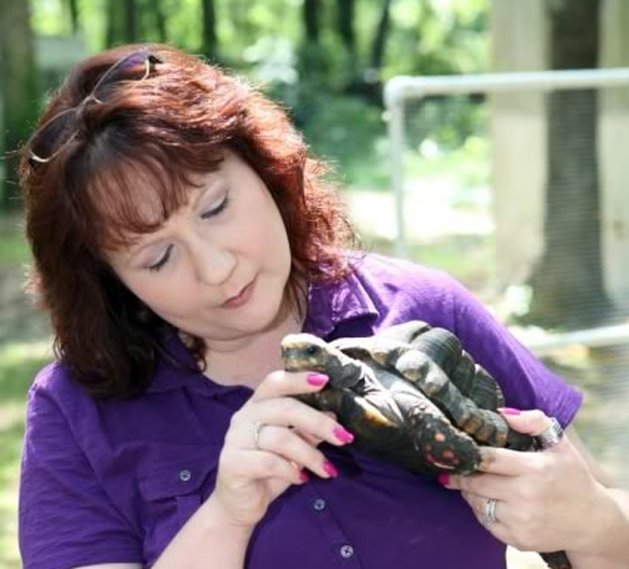


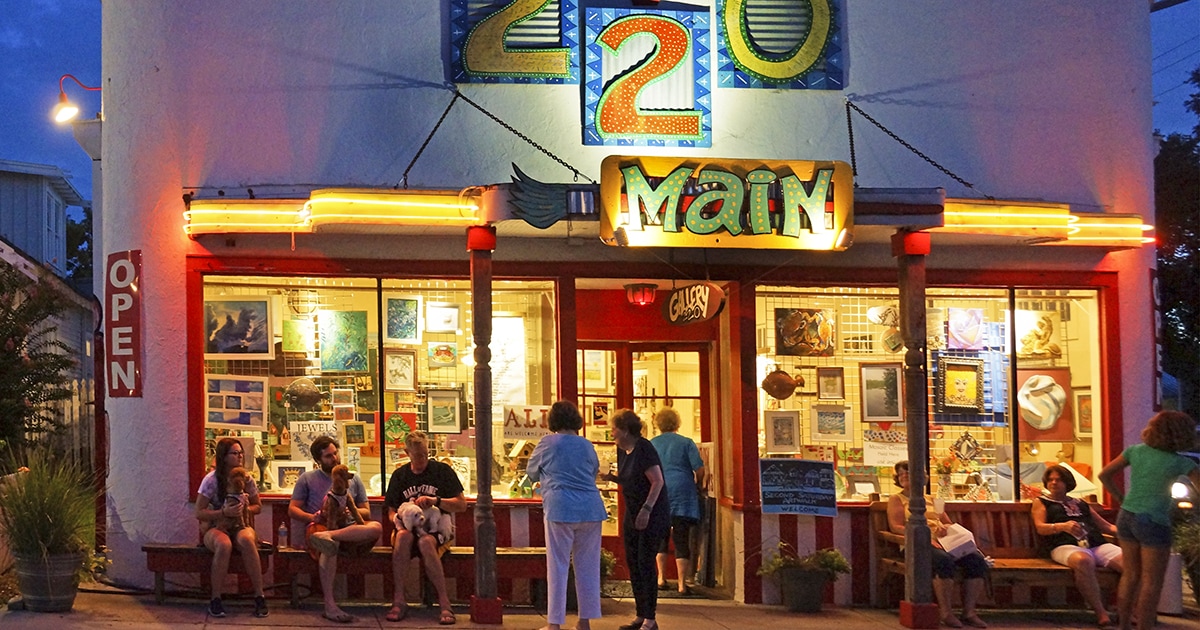

















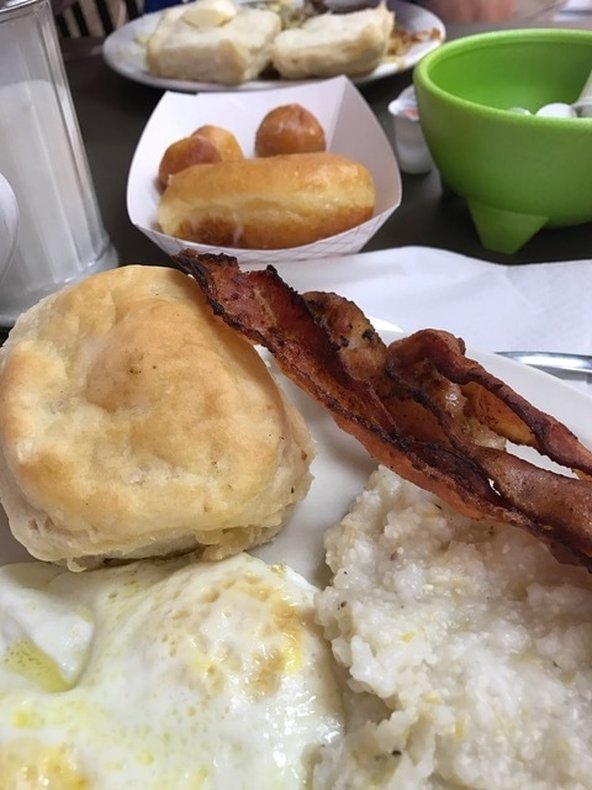

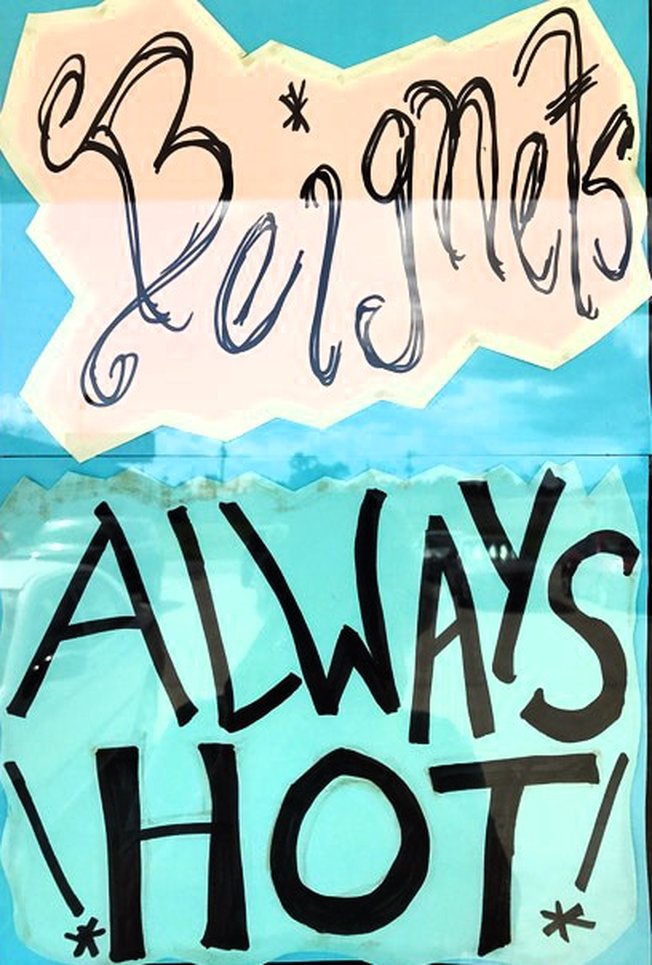


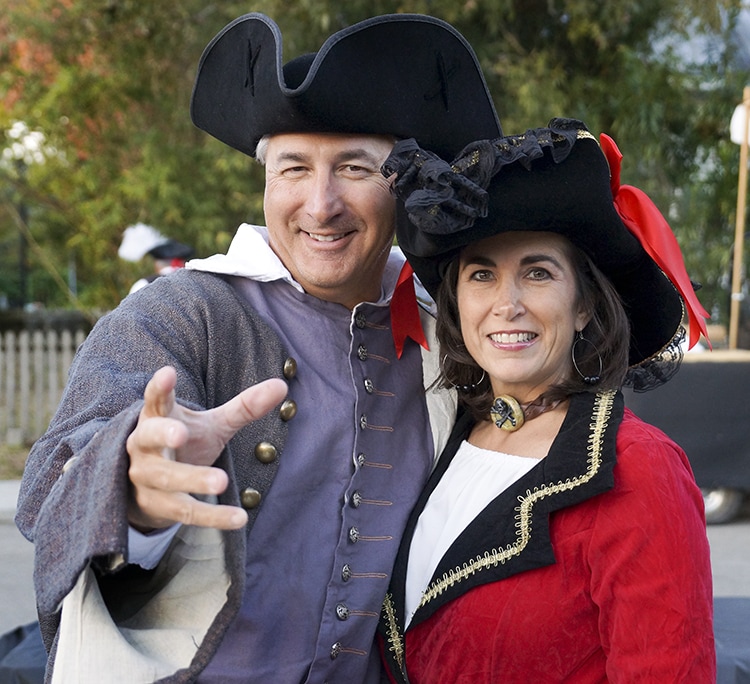
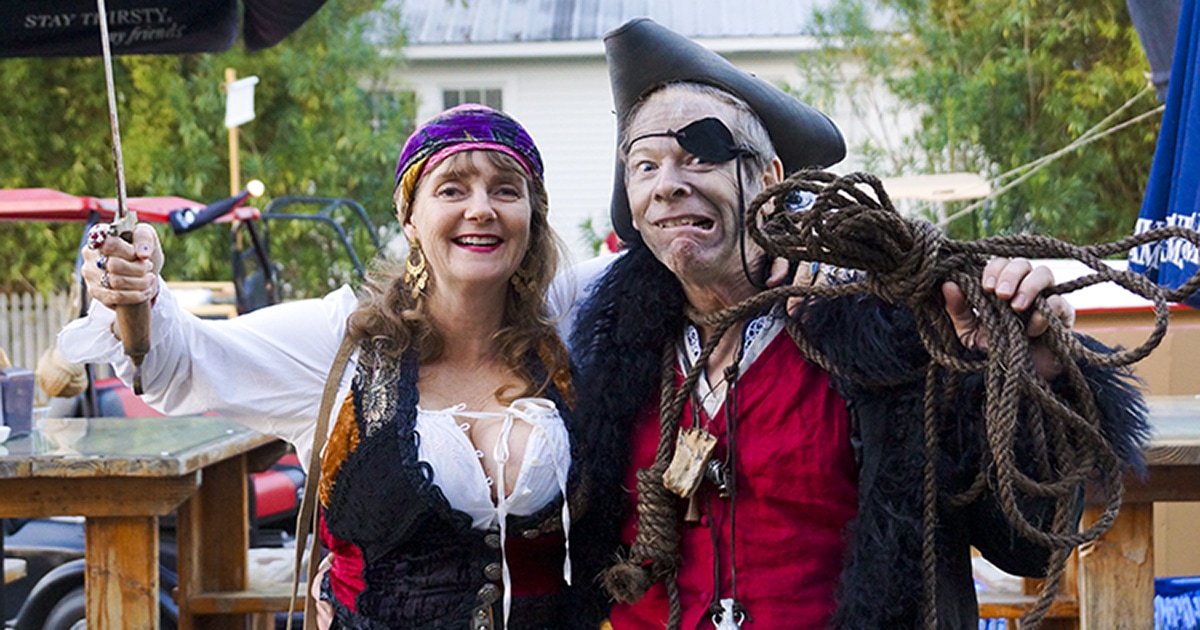
















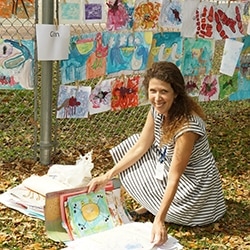
































 RSS Feed
RSS Feed

















